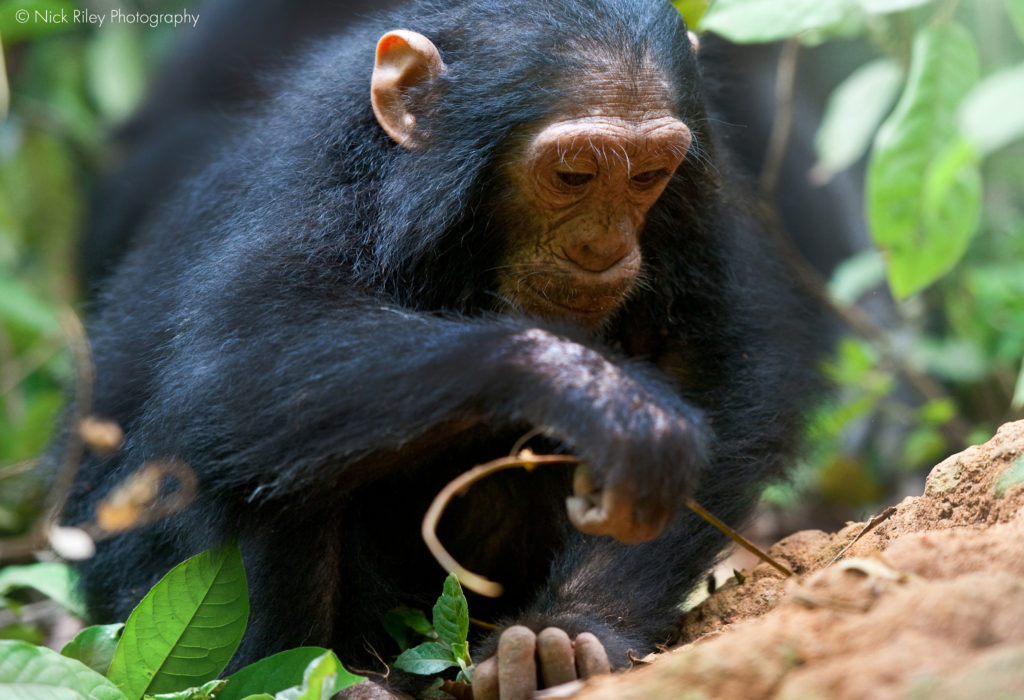Chimp и monkey в чем разница
Ape vs. Monkey
Though ape and monkey are often used interchangeably in the English language, they are not the same from a scientific point of view.
Apes and monkeys are primates that have evolved different physical and mental characteristics throughout time to respond to different needs and environments. For example, most monkeys have an easily visible tail, but no apes do, and while monkeys are physically built for a life in the trees, apes tend to be built for a life lived in the trees and on the ground.
Comparison chart
 | Ape | Monkey |
|---|---|---|
 |  | |
| Kingdom | Animalia | Animalia |
| Phylum | Chordata | Chordata |
| Order | Primates | Primates |
| Class | Mammal | Mammal |
| Suborder | Haplorhini (dry-nosed) | Haplorhini (dry-nosed) |
| Infraorder | Simiiformes (higher primates) | Simiiformes (higher primates) |
| Parvorder | Catarrhini (hook-nosed) | New-world monkeys: Platyrrhini (flat-nosed); Old-world monkeys: Catarrhini |
| Superfamilies | Cercopithecoidea (Old World monkeys like baboons and macaques) and Hominoidea (Great Apes and Lesser Apes) | None |
| Families | Hylobatidae (i.e., Lesser Apes like gibbons) and Hominidae (i.e., Great Apes, including humans) | Callitrichidae (e.g., marmosets) and Cebidae (e.g., squirrel monkeys) |
| Species | Around 23 between Lesser Apes and Great Apes. | Hundreds of known species |
| Habitat | Africa and Southern Asia. Life lived at least sometimes on the ground. Great Apes and Lesser Apes only in or near tropical rainforests. | Africa, Asia, and Central and South America. Life lived almost entirely in trees. |
| Lifespan | Can live up to 60 years | Can live up to 30 years |
| Brain size | Large | Small |
| Body Structure | Longer, usually upright posture. Long arms that are optimal for swinging from branch to branch. Humans entirely bipedal. | Shorter. Quadrupedal. Uses tail as «fifth limb» to help grasp limbs in trees. |
| Tail | No. | Old World monkeys: yes, but often short. New World monkey: yes. |
| Diet | Omnivorous. Fruits, plants, insects, small mammals (including monkeys). | Omnivorous. Fruits, plants, insects, small invertebrates. |
| Tool use | Can make and use tools for nut-cracking, hunting, and play. | No tool use |
Terminology
Historically, there has been debate in and out of science over what qualifies as an «ape» and what qualifies as a «monkey.» The two words have different language origins, but they have often been used interchangeably in translations and popular culture. Even past versions of academic resources, like the 1910 edition of Encyclopaedia Britannica, have indicated that «ape» and «monkey» are synonymous.
To understand the scientific differences between an ape and a monkey, you have to look at the way they are scientifically classified. If you go back millions and millions of years into the past, Great Apes (which humans fall under) and Lesser Apes, Old World (Africa- and Asia-based) monkeys, and New World (Americas-based) monkeys all share common ancestors. However, Old World monkeys, apes, and New World monkeys’ development, and therefore their scientific classification, branches off separately after a certain point in the evolutionary tree.
New World monkeys belong to a group, or parvorder, known as Platyrrhini (meaning flat-nosed), while Old World monkeys and apes belong to a parvorder known as Catarrhini (meaning hook-nosed). Old World monkeys are further differentiated from Great Apes and Lesser Apes by superfamilies: Cercopithecoidea for Old World monkeys and Hominoidea for Great Apes and Lesser Apes.
Sometimes understanding this ordering can be difficult because the visual shorthand for differentiating between apes and monkeys—that monkeys have tails, while apes do not—can seem overly simplistic.
Many have pointed to the Barbary macaque as an example of a tailless monkey, which is somewhat true, but it’s also more complicated than that. The Barbary macaque is a hook-nosed Old World monkey, which means that it is more closely related to Great Apes and Lesser Apes than it is to flat-nosed New World monkeys; it’s hard to tell whether it’s an ape or monkey. For this reason, the Barbary macaque is sometimes erroneously called the Barbary ape, even though it’s a monkey.
Naming conventions, some of which were developed before the theory of evolution was widespread, have changed over time in response to new evidence and have sometimes caused further confusion as the general public’s understanding has lagged behind the scientific community’s.
Due to the complex nature of classification, some scientists and educators have supported the near-interchangeable usage of «ape» and «monkey» that is already common. Others, though, have expressed frustration over the supposed lack or inadequacy of scientific education that is at the core of this common misunderstanding.
Habitat and Health
Old World monkeys are found in Africa and Asia, while New World monkeys are in Africa, Asia, and Central and South America. Great Apes are only found in or near tropical rain forests in Africa and, in the case of orangutans, Southern Asia. Humans are the only primates that live all over the planet in a wide variety of climates.
New World monkeys are small and live most of their lives out in trees, with many using a tail as a sort of «fifth limb.» Old World monkeys and apes are usually larger than New World monkeys. While no apes have tails, only vestigial ones like humans have, the appearance and usefulness of a tail in an Old World monkey depends on its environment. Most Old World monkeys have tails, but they are not necessarily used as an extra limb, like New World monkeys use theirs; some Old World monkeys have barely any tail at all, as is the case with the aforementioned Barbary macaque.
Primates are omnivorous, meaning they eat both plants and animals. Apes and monkeys mostly eat fruits, leaves, and other plant material, but they will also eat insects, eggs, and sometimes meat. Chimpanzees, in particular, are predators of smaller monkeys, like the red colobus.
A recent decades-long study performed by researchers at the University of Wisconsin-Madison found Rhesus macaque monkeys that consumed fewer calories led longer, healthier lives. This suggests that primates benefit from low-calorie diets. Researchers caution, however, that the lifespan of Rhesus macaques is quite different from some other primates, including humans, so further study is required.
Lifespan
Lifespans vary greatly between apes, monkeys, and their various subspecies. Provided an environment is not too threatening, many are able to live between 20 and 60 years of age, with apes usually being able to live longer than monkeys. Most species live longer in captivity, but then quality of life comes into question.
Environment plays a very important role in the lifespan of apes and monkeys, especially for Great Apes. While all have a variety of natural predators, such as crocodiles, humans have often encroached on nonhuman Great Apes’ rainforest environments, creating situations where shrinking habitats cause space and food scarcity. Some nonhuman primates are endangered or critically endangered because of humans, meaning entire species could go extinct in the near future.
In Culture
Nonhuman primates have long been found in popular culture, science, religion, and even on the dinner table. They feature in popular films, literature, and games, like King Kong, 2001: A Space Odyssey, and Curious George. They are also currently used in medical research and have even been sent into space, with Iran claiming it sent a monkey into space as recently as in 2013. In Hinduism, Buddhism, and other beliefs and folklore, monkeys and apes play important roles as gods, tricksters, or luck-bringers. And in some parts of the world, like China, monkey brains have been served as a delicacy.
Similarities to Humans
As apes, monkey, and humans are all primates, there are many similarities between all three. However, humans have more in common with their Great Ape (Hominidae family) cousins than they do with monkeys. Great Apes include humans, bonobos, common chimpanzee, Western and Eastern gorillas, and Bornean and Sumatran orangutans.
Around 96-99% of human DNA is the same in humans as it is in their close cousins, so it is not surprising that there is some overlap physical traits and behaviors. The physical similarities, such as larger and heavier bodies, bigger brains, upright posture, and various degrees of bipedalism, are numerous and often obvious; less obvious similarities include things like a vestigial — undeveloped or unusable — tail and appendix.
Which behaviors are similar and which are different is sometimes a hotly debated topic within the sciences, particularly in anthropology and evolutionary psychology. Some draw links between human wars and chimpanzee (and other apes’) aggression, while others have suggested humans have more in common with peacefully promiscuous bonobos.
The following video from BBC Wildlife documents chimpanzee tool use.
Chimps, Humans, and Monkeys: What’s the Difference?
It’s finally time to set the record straight: As much as we all love monkeys, Dr. Goodall’s studies and the work of the Jane Goodall Institute have primarily focused on chimpanzees, not monkeys. Now, I know your next question is probably, “But aren’t chimps the same thing as monkeys?” and the answer is, they are not! So what’s the difference and why does it matter?
Monkeys, chimpanzees, and humans are primates. Primates are mammals that are characterized by their advanced cognitive development and abilities, grasping hands and feet, and forward-facing eyes, along with other characteristics. Some primates (including some great apes and baboons) are typically terrestrial (move on the ground) versus arboreal (living in the trees), but all species of primates have adaptations to climb trees (EOL). Millions of years ago, primate ancestors evolved different defining characteristics from one another, branching into many species within different groups.
This can get confusing because of the numerous categories of primates: great apes, lesser apes, and Old/New World monkeys, are seemingly similar. All of the groups have similar characteristics, but there are characteristics that separate us. Great apes (humans, chimps, bonobos, gorillas and orangutans) generally have larger brains, larger bodies, and no tail. Dr. Goodall often likes to use Mr. H (a monkey plush toy who travels with her everywhere she goes) in her lectures to demonstrate this difference by asking the crowd, “How can we tell that Mr. H is not a chimpanzee?” She will then dangle Mr. H by his tail and say, “Chimps have no tail!”
Ok, so we understand how to identify great apes, but what about monkeys? There are many different species of monkeys, and what are known as ‘lesser apes’. Lesser apes (gibbons and siamangs) are usually smaller in stature, with thin arms, and a slightly smaller brain. Finally, monkeys are divided into “New World” and “Old World” monkeys. Many Old and New World Monkeys have tails, tend to walk on all fours like a cat or dog, and have the smallest brain out of the groups. Some Old World monkeys include baboons and guenons, while some New World monkeys include Capuchin and spider monkeys!
Now let’s get back to chimpanzees and humans. Humans did not evolve from chimps, as is a frequent misconception. Chimpanzees and humans share a recent common ancestor, and as some of this ancestral population evolved along one line to become modern chimpanzees, others of this ancestor evolved along a line of various species of early human, eventually resulting in Homo sapiens (you and me!). Chimpanzees are genetically closest to humans, and in fact, chimpanzees share about 98.6% of our DNA. We share more of our DNA with chimpanzees than with monkeys or other groups, or even with other great apes! We also both play, have complex emotions and intelligence, and a very similar physical makeup.
What many people may also not know, is how vital this taxonomy (or the systematic classification of organisms) is to Dr. Goodall and JGI’s story! It was in fact Dr. Goodall’s run in with the famed paleoanthropologist Dr. Louis Leakey in Kenya, which lead to her initial research in Gombe, Tanzania. Dr. Leakey was trying to understand early humans, and because his only point of reference was fossilized early human remains and other preserved cultural materials, he could not completely understand what early human behavior may have been like. When he met Jane, with her passion for and knowledge about animals, he knew she would be the perfect candidate to study chimpanzees – our closest living primate relative – from which he could conclude what behaviors were likely inherent to our most recent common ancestor and earlier humans. Dr. Leakey asked Jane to study the chimpanzees, Dian Fossey to study mountain gorillas, and Birute Galdikas to study orangutans, and they became known as ‘The Trimates.’
Zinda fishing for termites in Gombe National Park, Tanzania
In her research, Dr. Goodall made a revolutionary discovery when she observed that the chimps in Gombe were making and using tools. It was groundbreaking because it meant redefining everything that scientists thought they knew about what separated humans and chimpanzees! Furthermore, this redefined the notion that humans lived “outside” of the animal kingdom, and instead placed humans alongside the rest of animalkind. It has also lead to the revelation that other animals also make and use tools, have emotions, intelligence and sentience.
Our relationship to other primates is a dynamic one – and as Jane as often said, “Chimpanzees, more than any other living creature, have helped us to understand that there is no sharp line between humans and the rest of the animal kingdom. It’s a very blurry line, and it’s getting more blurry all the time.”
Want to know more and to support our ongoing research in Gombe, now the longest running wild chimpanzee study in the world? Become a Gombe Science Hero! Find out more and get involved here.
The Jane Goodall Institute is a global community conservation organization that advances the vision and work of Dr. Jane Goodall. By protecting chimpanzees and inspiring people to conserve the natural world we all share, we improve the lives of people, animals and the environment. Everything is connected—everyone can make a difference.
Chimp и monkey в чем разница
A chimp is short for a chimpanzee. Gorillas and chimpanzees are different species of monkeys
Gorillas will feel challenged when you hit both sides of your chest with both of your hands
@writtenbyemmaa Actually they’re apes, not monkeys. Monkeys have long tails, whereas apes (including humans) do not.
Символ показывает уровень знания интересующего вас языка и вашу подготовку. Выбирая ваш уровень знания языка, вы говорите пользователям как им нужно писать, чтобы вы могли их понять.
Мне трудно понимать даже короткие ответы на данном языке.
Могу задавать простые вопросы и понимаю простые ответы.
Могу формулировать все виды общих вопросов. Понимаю ответы средней длины и сложности.
Понимаю ответы любой длины и сложности.


Решайте свои проблемы проще в приложении!

Chimp и monkey в чем разница
A monkey is an ape, but an ape may not be a monkey. Apes are the main species, whereas a monkey is one type of ape, such as gorilla, chimpanzee, orangutan, etc.
Символ показывает уровень знания интересующего вас языка и вашу подготовку. Выбирая ваш уровень знания языка, вы говорите пользователям как им нужно писать, чтобы вы могли их понять.
Мне трудно понимать даже короткие ответы на данном языке.
Могу задавать простые вопросы и понимаю простые ответы.
Могу формулировать все виды общих вопросов. Понимаю ответы средней длины и сложности.
Понимаю ответы любой длины и сложности.


Решайте свои проблемы проще в приложении!

Difference Between | Descriptive Analysis and Comparisons
Key Difference: Monkeys and chimps, although initially believed to be similar in species resulted to belong to complete differ scientific family. Chimps actually belong to the Ape family, which differs from the monkeys greatly.
.jpg)
Chimpanzees or chimps, are actually the closest relatives to the humans, with only a 5% difference in the DNA. Chimpanzees split from the human branch of the family about four to six million years ago.
Monkeys can be divided into two groups: Old World monkeys and New World monkeys, excluding apes and humans. Monkeys are primates that belong to the Haplorhini suborder and Simiiformes infraorder. There are more 260 living species of monkeys, many of which are arboreal.
Monkeys and chimps, although initially believed to be similar in species resulted to belong to complete differ scientific family. Chimps actually belong to the Ape family, which differs from the monkeys greatly.
A simple way to distinguish the monkeys from apes is to check for a tail; monkeys have tails and apes do not, which means that chimps do not have a tail. Monkeys are also often small in size with the smallest being 4.6 inches with a 6.8 inches tail, weighing 100 grams to 3.3 feet weighing 36 kilograms. Monkeys can be arboreal, as well as ground dwellers, which means that they can live in trees or built nests on the ground.
They also communicate via expressions, vocalizations and body movements. They show affection and make peace by grooming each other. Monkeys posses a smaller brain and have a diet of fruits, vegetables and small insects. Monkeys have small arms and long legs and opposable thumbs on both their hands and legs. Monkeys cannot swing from tree to tree as popularly believed, their arm structures do not support this behavior, and rather they run across the branches. They are more prone to running on branches and climbing to the top of the treetops.

Chimps are similar in heights to humans, with average male chimp standing up to 1.7 m (5.6 ft) high and weigh as much as 70 kg, while the female is usually smaller and lighter. They have long arms, which are longer than their legs and when extended, span one and a half times the body’s height. The bonobo is slightly shorter and thinner than the common chimpanzee but has longer limbs.
Both the species are known for climbing trees and walking both, on fours as well as twos. Both the common chimpanzee and bonobo can walk upright on two legs when carrying objects with their hands and arms. Chimps have a dark coats and no hair on their face, fingers, palms of the hands, and soles of the feet. They also lack a tail and have testicles that are unusually large for their bodies.
Chimps live in communities of multiple male and female groups with an alpha male. Lower-ranking chimpanzees will show respect by submissively gesturing in body language or reaching out their hands while grunting. Female chimpanzees will show compliance to the alpha male by presenting their hindquarters. Chimps show an increase in tool use, a sign of higher intelligence. They are known to use stones as hammers, sticks to fish out termites, complex nest building, etc. Chimps communicate in a manner similar to human nonverbal communication, using vocalizations, hand gestures, and facial expressions.













